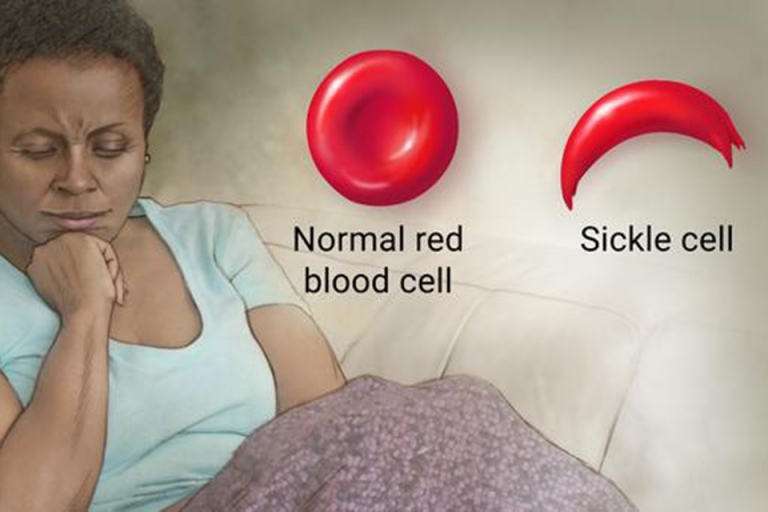
Crises in Sickle Cell Disease
Dear Mirror doctor, what are the various crises- (hope there is a better term) seen in sickle cell?
Sackey
I have seen that you have raised issues with the word “crises” used in sickle cell disease and a lot of people share that sentiment.
According to Todd Savitt and colleagues, words used to name and describe disease phenomena are a reflection of society.
The term "crisis" became associated with sickle cell disease in the mid-1920s, more than a decade after the first description of the disease in literature. The application of the term to this new disease in the 1920s was purely in relation to physicians' observations of their patients' urgent situations.
Though commonly used by health care providers and patients today, "crisis" may not be the appropriate term for sickle cell patients suffering severe pain +-because people endure differing amounts of pain before stating they are "in crisis."
The result can be under treatment of the pain or mistrust between physicians and patients about use of strong (narcotic) pain-relievers.
Some patients believe the term is useful in communicating the severity of their pain and the urgency of their need for relief from it, especially when seeking care at hospital emergency departments, while others believe "crisis" does not accurately reflect the severity or seriousness of their situation.
That said, we will leave the experts to slug it out in coming out with a better team. For now, though, permit me to use the term in this write up.
Sickle cell crises are sudden emergency situations or complications that are seen in people with sickle cell disease attributable to the sickling phenomenon. There are several situations that can trigger crisis in sickle cell.
The basic underlying problem in most crises is attributable to changes that make the red blood cells prone to forming a sickle shape, and crystallising in the small blood vessels making it harder for blood to flow smoothly.
Sickle-shaped red blood cells are sticky and prone to forming clumps and blocking blood vessels anywhere in the body.
There are well known events that can induce crises usually referred to as triggers. These include:
Infections – either viruses or bacteria or both
Dehydration - (loss of body fluids without adequate replacement)
Cold temperature
Stress from various sources
Surgery or medical illness
Low oxygen such as experienced at high altitudes
The major and common types of sickle cell crisis are:
Vaso occlusive pain: This type is considered the most common. It occurs when the red blood cells form a sickle shape and block small blood vessels. This deprives the cells and structures distal to the blocked vessels of much needed oxygen for normal function. As a result, the structures affected “cry out” resulting in extreme pain in the affected areas of the body.
Acute chest syndrome: This occurs when the small blood vessels of the lungs become blocked by sickle-shaped red blood cells.
As a result, they present with difficulty in breathing, fast breathing, intense chest pain and low oxygen levels. It is one of the most feared complications that can cause death if not actively diagnosed and treated.
Aplastic crisis: This condition occurs when the bone marrow slows or stops making red blood cells, leading to severe anemia.
Sequestration crisis: This occurs when the red blood cells accumulate in the spleen or liver. This leads to enlargement of the spleen or liver and development of severe anemia.
The sequester blood in these organs can reverse with the pooled blood getting back into the circulation. Thus, the anemia has to be managed carefully so we don’t overload the person with blood transfusion.
Hyperhemolytic crisis: This occurs when a trigger causes accelerated breakdown of the red blood cells leading to rapid and severe anemia.
The urine becomes very dark like coca-cola and the eyes become yellow or deepening of the yellow eyes occur. Triggers include malaria and severe infections. Sickle cell disease has other health effects that are not considered sickle cell crisis.
These include such complications as painful penile erections called priapism, strokes, leg ulcers and end-organ damage such as kidney and heart failure.
How can i prevent a crisis?
The following can reduce the number of crisis episodes:
• Dress in warm clothes when it’s cold or when in an air-conditioned building
• Drinking plenty of water to avoid dehydration, a known trigger.
• Limit alcohol consumption.
• Stress management
• Avoid being around people who are sick.
• Don’t smoke.
• Early care if pregnant or planning to get pregnant.
• Manage any other health conditions such as diabetes.
• Stay up to date with vaccines.
• Pay attention to personal hygiene
All these notwithstanding, the most important measure is to seek early treatment when unwell.
astom2@yahoo.com
A member of Paediatric Society of Ghana
